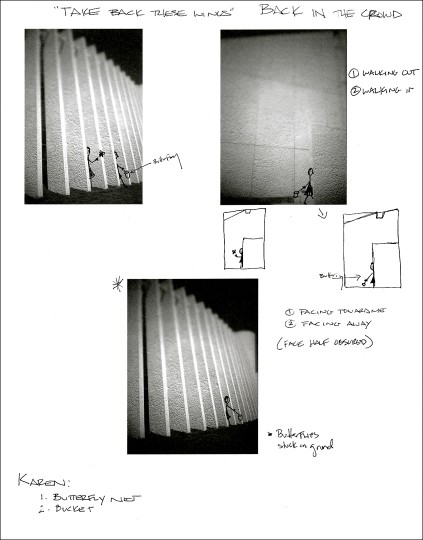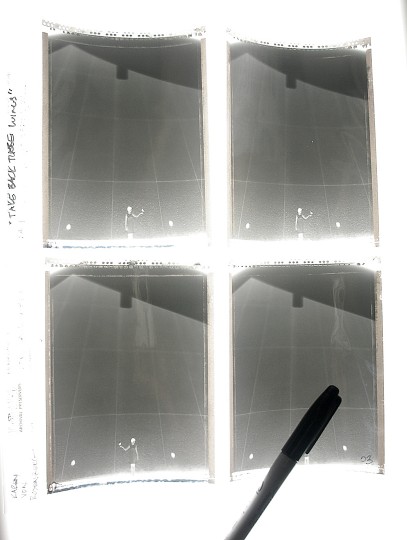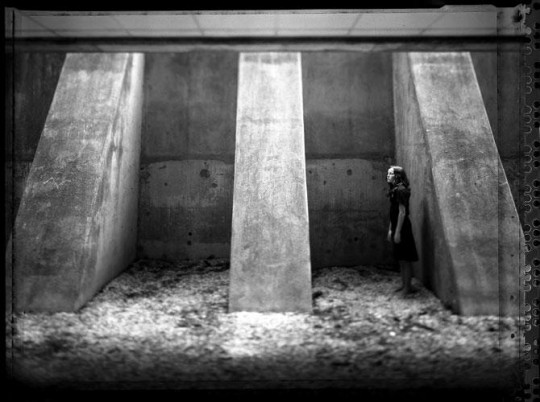Blog

The Creation of a Fine Art Photograph with Polly Chandler
A Chat with Film Photographer Polly Chandler
Polly Chandler grew up in Southern Illinois and graduated with an MFA in photography from Southern Illinois University. She has exhibited her work nationally and her photographs have been published in magazines such as PDN, Rangefinder and B&W Magazine. Polly now lives in Austin, Texas and continues to make photographs as well as strives to challenge herself in her work. She is forever seeking to make images that filter and render her experiences, emotions and search for personal meaning through her photography.
While many, in our digital age, have strayed from the days of darkrooms, film photographer Polly has held firm. Among her favorite tools, Polly lists large format camera Toyo 45CX and Polaroid Type 55 Positive/Negative film, the latter of which she stockpiled when Polaroid’s end was imminent.
“In 2008, I got wind that Polaroid may be going out of business so I took out a credit card and bought all I could afford.”

Fascinated by Polly’s haunting beautiful, largely black and white work and her steadfast dedication to film, I asked her to discuss her process behind one of her works, entitled, “Take Back These Wings,” from her collection: You Build It Up, You Wreck It Down.

In Polly’s Words
My latest project is a series of narratives based on my personal interpretations of the music and lyrics by the singer-song writer, Tom Waits.
All of the images included in this project were taken with a Large Format Toyo CX45 View camera using Polaroid Type 55 film.
When creating a piece, first I develop a concept for an image. I begin by forming an idea. In this particular series, called “You Build It Up, You Wreck It Down”, I chose a line from a song by the singer/songwriter Tom Waits, and location scout.

These snapshots were taken at the location I had in mind with my iPhone, which allowed for me to print them out on a page and draw on top of them.
After location scouting, I get back to the sketching board to work my ideas. The wonderful thing about photography is that you can make several different frames, compositions, and re-work ideas all in one shoot.

In the field, I’ll process my film in the chemistry on location, photographing until I get the shot that is just right.
It is important to me that my decisions in my image making are done in the field. Nothing is an afterthought; everything is done in-camera.
My photographs represent, among other things, my experience and interpretation of a particular place and moment in time (ultimately representing myself). All of my images are done through the camera, there is no digital manipulation aside from some levels adjusting.
For me, part of challenging myself as a photographer is to create the image I’m looking for while in the field, creating in the camera and exposing on the negative.

Next I’ll scan in the negative using an Epson 3200 Flatbed scanner that allows for scanning 4X5 negatives. I now have to scan my negatives since I no longer have a darkroom. The printer I use is an Epson 3800 model. And it’s a great printer, but what really makes the difference is the paper. I use many different papers depending on what I am printing for. But my favorite paper is Hahnemuhle.
In the darkroom, I dodge and burn, a technique used during the printing process to manipulate the exposure of a selected area(s) on a photographic print, deviating from the rest of the image’s exposure. In a darkroom print from a film negative, dodging decreases the exposure for areas of the print that I wish to be lighter, while burning increases the exposure to areas of the print that should be darker.
Lastly, I clean up the dust and print. I only do in Photoshop what I can do in the darkroom. What you see in the final print is what I saw in-camera. I am a “straight” photographer, in other words I do not manipulate my image in post-production.

I print full frame (meaning I do not crop the edges of the negative) to show that I pay close attention to every detail within my frame; including the very edges.
Nothing is an accident. Photographing this way does slow everything down and the subject has to pay close attention to the process of making the photograph along with me, so it’s a very collaborative process, which I like.

In photography, I found my passion; which for me does not always equate to joy. It’s as close to a purpose as I will ever get, and with that can come strife, hardship and frustration. But on the other side of that hard work is a creation of my imagination, and nothing is more satisfying.

For more of Polly’s work:
Polly Chandler.com | Facebook | Flickr

